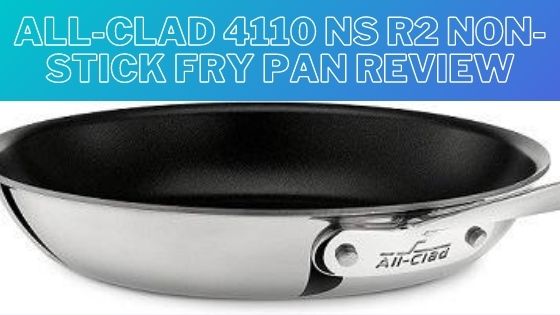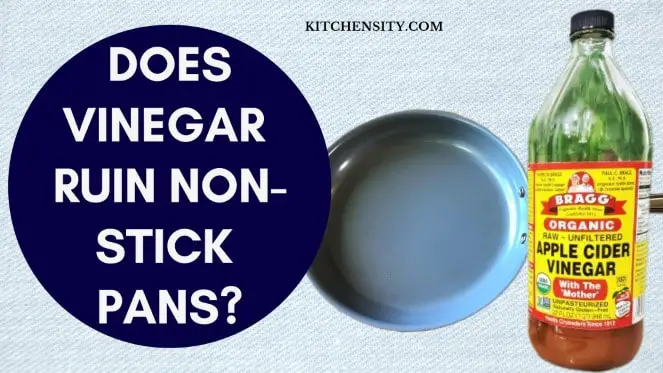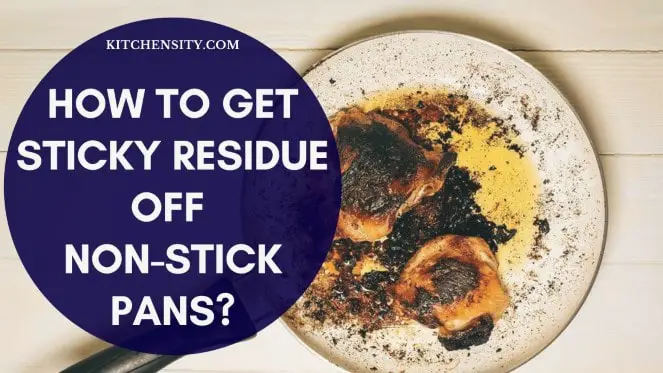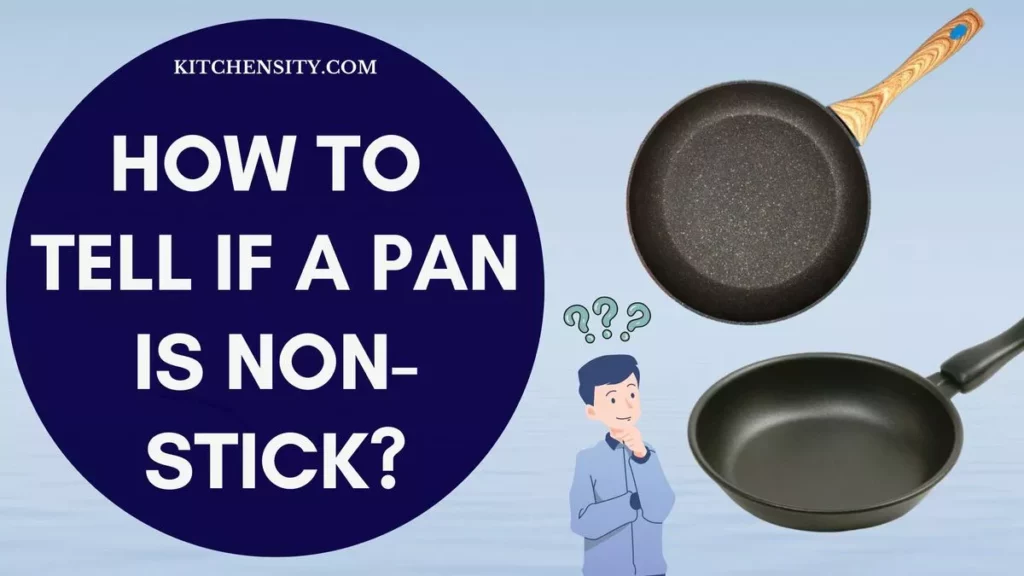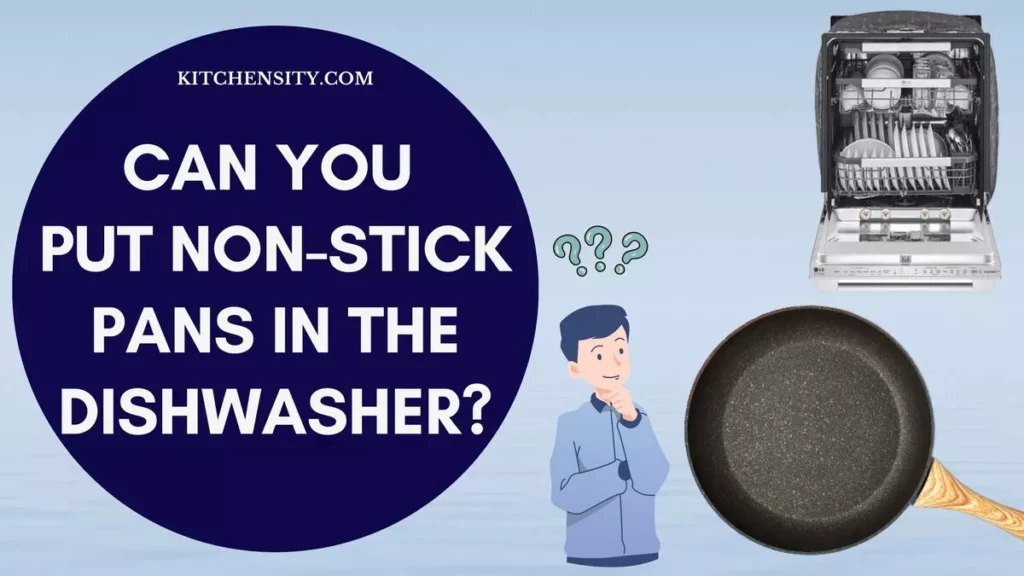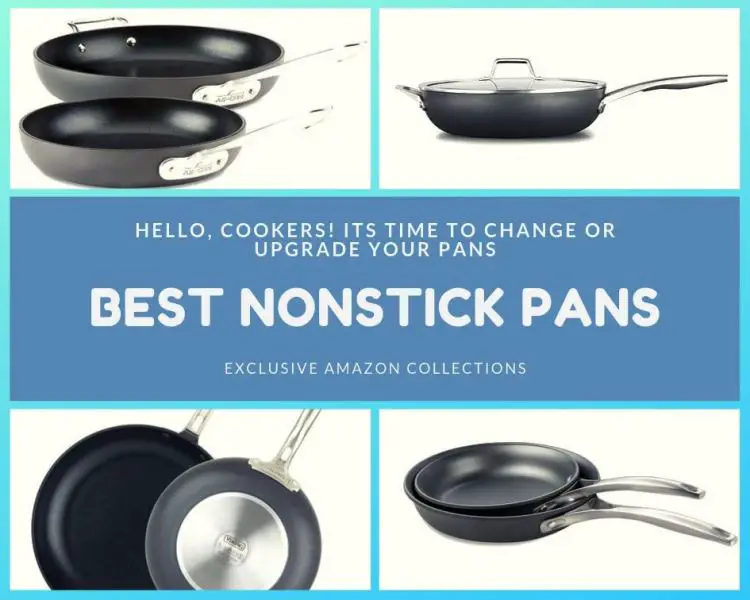Non-stick cookware is a popular kitchen item among home chefs because of its convenience and ease of cooking. However, it is often surrounded by myths and facts regarding its safety, durability, and environmental impact.
In this article, I will explore these myths and uncover the facts behind non-stick cookware, providing you with a clear understanding of its benefits and considerations for use.
Table of Contents
- 1 Myths And Facts Of Non-Stick Cookware.
- 1.1 1. Common Myths And Facts About PTFE And PFOA.
- 1.2 2. Myths And Facts About The Health Risks Of Non-Stick Coatings.
- 1.3 3. Debunking Myths About The Durability Of Non-Stick Coatings.
- 1.4 4. Myths About The Cooking Methods For Non-Stick Cookware.
- 1.5 5. Myths And Facts About The Environmental Impact Of Non-Stick Cookware.
- 2 Are All Non-Stick Pans Teflon?
- 3 What Is Bad About Non-Stick Pans?
- 4 Safety Tips For Using Non-Stick Cookware.
- 5 Frequently Asked Questions (FAQs)
- 5.1 Are All Non-Stick Coatings Made With PFOA?
- 5.2 Can Non-Stick Cookware Be Used For High-Heat Cooking Methods Like Searing And Broiling?
- 5.3 Are There Any Health Risks Associated With Using Non-Stick Cookware?
- 5.4 Is It True That Non-Stick Coatings Are Not Environmentally Friendly?
- 5.5 What Are Some Common Misconceptions About The Durability Of Non-Stick Coatings?
Myths And Facts Of Non-Stick Cookware.
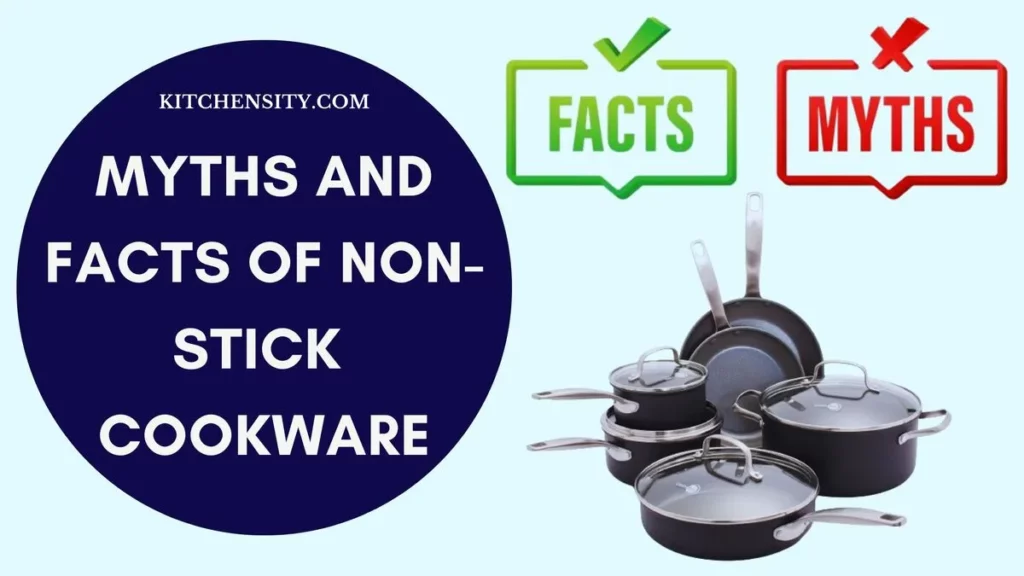
1. Common Myths And Facts About PTFE And PFOA.
Myth: Non-Stick Coatings Containing PTFE Are Unsafe For Cooking.
Fact: When used properly and not overheated (which can release fumes), PTFE-based non-stick coatings are considered safe for cooking. PTFE is inert and does not react with food, making it a popular choice for non-stick cookware.
Myth: PFOA Is Present In All Non-Stick Cookware.
Fact: While PFOA was used in the production of some non-stick coatings in the past, many reputable manufacturers have phased out its use due to environmental and health concerns. Modern non-stick cookware is typically PFOA-free.
Myth: PTFE Coatings Are Not Durable.
Fact: With proper care and use, PTFE-based coatings can be durable and long-lasting. Avoiding metal utensils and abrasive cleaning tools can help prolong the life of the non-stick coating.
Myth: Non-Stick Cookware Is Entirely Safe For The Environment.
Fact: While PTFE-based coatings are generally safe for consumers, their production and disposal can pose environmental challenges. Some manufacturers are working on eco-friendly alternatives to address these concerns.
Myth: “Teflon” Is Considered The Same Thing As PFOA.
Fact: Teflon is a brand name for a type of non-stick coating made with polytetrafluoroethylene (PTFE). PFOA (perfluorooctanoic acid) is a synthetic chemical used in the production of some non-stick coatings, including some early formulations of Teflon. However, Teflon itself does not contain PFOA, and modern Teflon coatings are typically PFOA-free.
Also Read – How To Troubleshoot Common Issues With Non-Stick Surfaces?
2. Myths And Facts About The Health Risks Of Non-Stick Coatings.
Myth: Non-Stick Coatings Are Toxic And Can Release Harmful Chemicals Into Food.
Fact: When used properly and not overheated, non-stick coatings are considered safe for cooking. PTFE, the primary component of non-stick coatings, is inert and does not react with food. However, overheating non-stick cookware can lead to the release of fumes that may cause flu-like symptoms in humans and can be fatal to birds.
Myth: Non-Stick Coatings Pose A Significant Cancer Risk.
Fact: There is limited evidence to suggest that PFOA, a chemical once used in the production of some non-stick coatings, may be linked to certain health issues. However, PFOA has been largely phased out of non-stick coatings, and modern products are typically PFOA-free. The U.S. Environmental Protection Agency (EPA) has worked with companies to voluntarily reduce PFOA emissions and exposure.
Myth: It Is Safe To Use Scratched Non-Stick Cookware.
Fact: Scratched non-stick coatings can lead to the ingestion of small particles, which are generally considered inert but should be avoided. It is best to replace non-stick cookware if the coating is significantly scratched or damaged to prevent potential health risks.
Myth: Non-Stick Coatings Are Harmful To The Environment.
Fact: While the production and disposal of non-stick coatings can pose environmental challenges, modern coatings are designed to be more environmentally friendly. Many manufacturers have switched to PFOA-free formulations and are working on developing more sustainable options.
Myth: Ceramic Coatings Are Better Than Pans With Teflon™ Brand Nonstick Coating.
Fact: While ceramic coatings are often marketed as environmentally friendly and free from PFOA and PTFE, they may still contain other chemicals. Both ceramic and Teflon™ brand nonstick coatings can be safe when used correctly. The key is to follow the manufacturer’s instructions for proper use and care.
Myth: All Non-Stick Coatings Are The Same.
Fact: Nonstick coatings can vary widely in quality, durability, and safety. Different brands and types of nonstick coatings may have different compositions and performance characteristics. It’s essential to research and choose reputable brands known for high-quality, safe nonstick coatings.
Myth: You Can’t Store Food In The Refrigerator In A Nonstick Pan.
Fact: It is generally safe to store food in the refrigerator in a nonstick pan. However, it’s essential to ensure that the pan is clean and dry before storing food to prevent bacterial growth. Additionally, acidic foods or foods with strong flavors may affect the nonstick coating over time, so it’s best to use appropriate storage containers when possible.
Also Read – Best Non-Stick Cookware Brands
3. Debunking Myths About The Durability Of Non-Stick Coatings.
Myth: Non-Stick Coatings Are Not Durable And Wear Off Quickly.
Fact: The durability of a non-stick coating depends on various factors, including its quality, thickness, and how it is used and maintained. High-quality non-stick coatings, when used and cared for properly, can be quite durable and long-lasting.
Myth: Non-Stick Coatings Scratch Easily And Lose Their Non-Stick Properties.
Fact: While non-stick coatings can scratch if not handled carefully, using non-abrasive utensils and gentle cleaning methods can help prevent this. Proper care can maintain the non-stick properties of the coating for an extended period.
Myth: Dishwashers Damage Non-Stick Coatings.
Fact: While some non-stick coatings may be sensitive to harsh dishwasher detergents and high heat, many modern non-stick cookware items are dishwasher-safe. However, handwashing with mild soap and a soft sponge is often recommended to prolong the life of the coating.
Myth: Once The Non-Stick Coating Starts To Wear Off, The Cookware Is No Longer Usable.
Fact: Minor wear and tear on a non-stick coating may not necessarily render the cookware unusable. As long as the base material of the cookware is still intact and safe for cooking, it can still be used effectively with some adjustments in cooking techniques.
Also Read – Non-Stick Cookware And Sustainable Living
4. Myths About The Cooking Methods For Non-Stick Cookware.
Myth: Non-Stick Cookware Can Only Be Used For Low-Heat Cooking.
Fact: While it’s true that non-stick coatings can be damaged by high heat, many modern non-stick pans are designed to withstand moderate heat levels. It’s essential to follow the manufacturer’s guidelines regarding heat settings and avoid overheating the cookware.
Myth: Non-Stick Cookware Cannot Be Used For Searing Or Browning.
Fact: Non-stick pans can be used for searing and browning certain foods, especially if they have a durable, high-quality coating. However, it’s important to avoid using metal utensils that can scratch the surface and compromise their non-stick properties.
Myth: Non-Stick Cookware Requires No Oil Or Fat For Cooking.
Fact: While non-stick coatings reduce the need for excessive oil or fat, a small amount is often recommended to enhance the cooking process and prevent sticking. Using a minimal amount of oil or fat can also improve the flavor and texture of the food being cooked.
Myth: Non-Stick Cookware Is Not Suitable For Use In The Oven.
Fact: Many non-stick pans are oven-safe up to a certain temperature, as indicated by the manufacturer. It’s essential to check the manufacturer’s instructions for specific temperature limits to avoid damaging the cookware.
Also Read – Types Of Non-Stick Coatings
5. Myths And Facts About The Environmental Impact Of Non-Stick Cookware.
Myth: Non-Stick Cookware Is Entirely Eco-Friendly.
Fact: While non-stick coatings have advantages in terms of reducing the need for oil and making cleaning easier, their production involves the use of chemicals and energy-intensive processes. Also, the disposal of non-stick cookware can pose challenges due to the materials used in their construction.
Myth: Non-Stick Coatings Are All The Same In Terms Of Environmental Impact.
Fact: Not all non-stick coatings are created equal. Some manufacturers are working to develop more eco-friendly formulations that minimize the use of harmful chemicals and reduce energy consumption during production. Consumers can look for cookware labeled as PFOA-free or made with environmentally friendly materials.
Myth: Non-Stick Cookware Cannot Be Recycled.
Fact: While non-stick coatings themselves are not typically recyclable, many non-stick cookware items are made with recyclable materials such as aluminum or stainless steel. Properly recycling the metal components of non-stick cookware can help reduce their environmental impact.
Myth: Using Non-Stick Cookware Is Inherently Bad For The Environment.
Fact: While there are environmental considerations associated with non-stick cookware, using it responsibly and for its intended lifespan can mitigate some of these concerns. Proper care and maintenance can prolong the life of non-stick cookware, reducing the frequency with which it needs to be replaced.
Also Read – Environmental Impact Of Non-Stick Cookware
Are All Non-Stick Pans Teflon?
No, not all non-stick pans are made with Teflon (PTFE) coatings. Teflon is a specific brand of non-stick coating made with polytetrafluoroethylene (PTFE), but there are other types of non-stick coatings available on the market. These alternatives include ceramic, silicone, and other proprietary coatings that offer non-stick properties without using PTFE. You can choose from a variety of non-stick pans with different coatings based on your preferences and needs.
What Is Bad About Non-Stick Pans?
While non-stick pans offer convenience in cooking, there are some potential drawbacks and concerns associated with their use. They are
- Non-stick coatings can emit toxic fumes if overheated (typically above 500°F or 260°C), which can pose health risks, especially to birds and in poorly ventilated spaces. Overheating can also cause the non-stick coating to break down, affecting its performance.
- Non-stick coatings can wear off over time, particularly with heavy use or abrasive cleaning. Once the coating starts to degrade, the pan may no longer provide the non-stick properties it was designed for.
- The production and disposal of non-stick pans can have environmental implications. Traditional non-stick coatings like PTFE have raised concerns about the release of perfluorinated compounds (PFCs) into the environment. While newer coatings claim to be more environmentally friendly, their long-term impact is still being studied.
- Non-stick pans are generally not recommended for high-heat cooking methods like searing or broiling, as this can damage the coating and release harmful fumes.
- Non-stick coatings are susceptible to scratching, which can lead to the ingestion of small particles. Using non-abrasive utensils and gentle cleaning methods can help prolong the life of the coating.
Also Read – What Recipes Work Best With Non-Stick Pans?
Safety Tips For Using Non-Stick Cookware.
- Never preheat an empty non-stick pan or use it on high heat, as this can release toxic fumes.
- Stick to low or medium heat settings when cooking with non-stick pans to prevent overheating.
- Ensure proper ventilation in your kitchen to disperse any fumes that may be released during cooking.
- Use non-metal utensils to avoid scratching the non-stick coating.
- Use mild dish soap and a soft sponge to clean non-stick pans, avoiding abrasive cleaners that can damage the coating.
- Avoid stacking non-stick pans, as this can lead to scratches and damage to the coating.
- Regularly inspect your non-stick pans for signs of wear or damage, and replace them if the coating is compromised.
- Be gentle when using non-stick pans to prevent scratching or chipping the coating.
- If you have concerns about non-stick coatings, consider using alternative cookware materials like stainless steel or cast iron.
Also Read – How To Care For Non-Stick Pans When Used Outdoors?
Frequently Asked Questions (FAQs)
-
Are All Non-Stick Coatings Made With PFOA?
Not all non-stick coatings contain PFOA, and many modern coatings are PFOA-free. PFOA has been associated with health concerns but is no longer used in most non-stick coatings.
-
Can Non-Stick Cookware Be Used For High-Heat Cooking Methods Like Searing And Broiling?
Non-stick cookware is generally not recommended for high-heat cooking methods, as excessive heat can damage the coating and release harmful fumes.
-
Are There Any Health Risks Associated With Using Non-Stick Cookware?
While properly used non-stick cookware is generally safe, overheating can release fumes that may cause temporary flu-like symptoms in humans and can be fatal to birds.
-
Is It True That Non-Stick Coatings Are Not Environmentally Friendly?
The environmental impact of non-stick coatings varies. While some older formulations raised environmental concerns, newer coatings are designed to be more environmentally friendly.
-
What Are Some Common Misconceptions About The Durability Of Non-Stick Coatings?
There is a misconception that non-stick coatings are not durable, but with proper care, high-quality coatings can be long-lasting.
Katrina Smith is a seasoned expert with over 25 years of experience in all things related to cooking and the kitchen. As an avid cook and kitchen enthusiast, she is passionate about sharing her knowledge and expertise on cookware, kitchen appliances, kitchen tips, and kitchen staples.
Through her articles and reviews, Katrina aims to inspire and help others improve their cooking skills, experiment with different ingredients, and invest in quality cookware and appliances.

